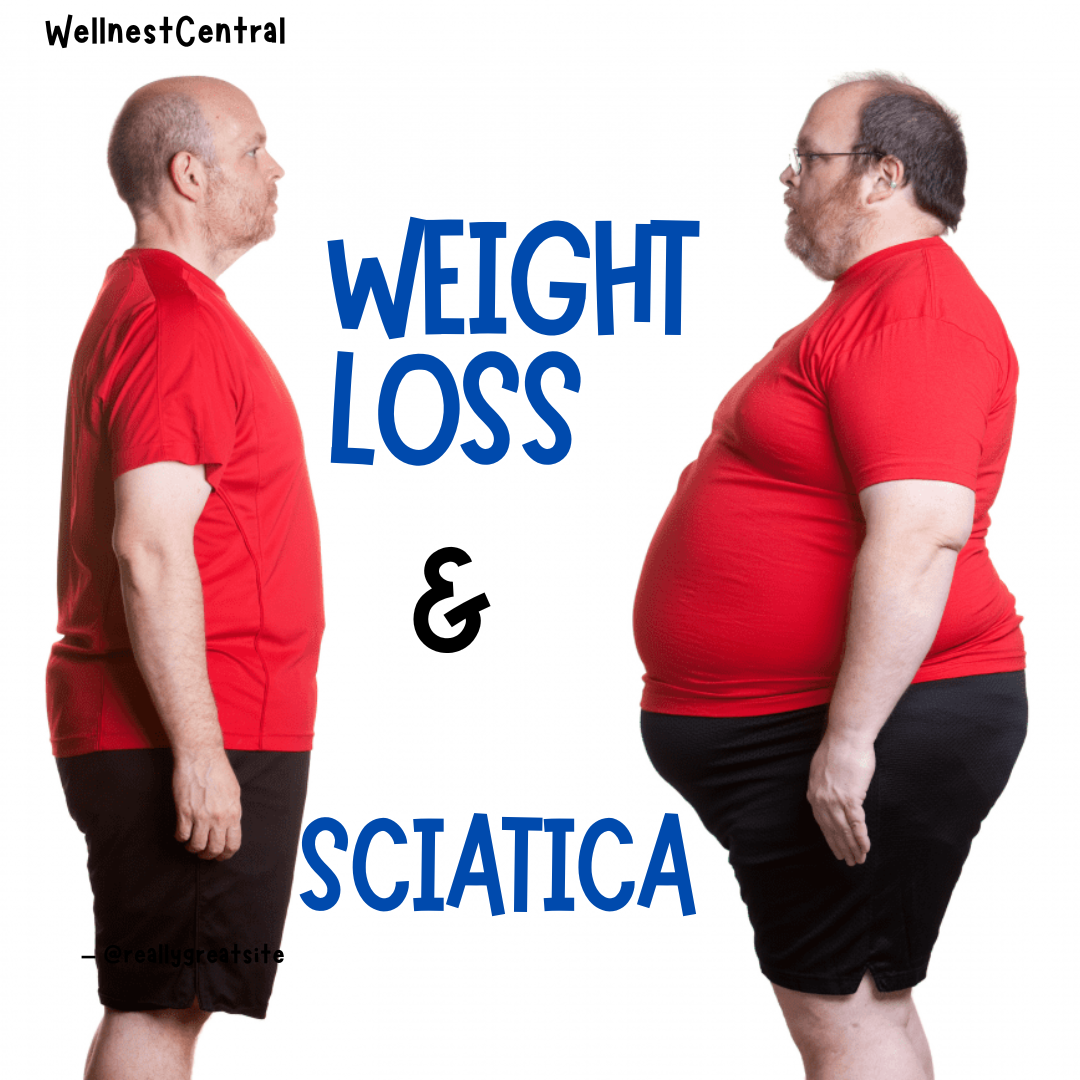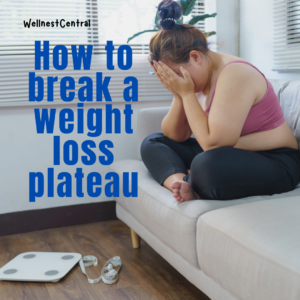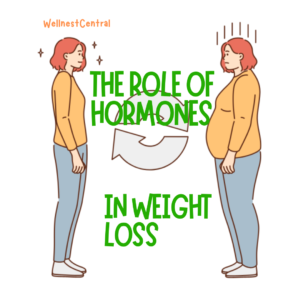Introduction
Living with sciatica pain can be exhausting. If you’ve ever felt that sharp, radiating pain from your lower back down your leg, you know how debilitating it can be. Sciatica isn’t just an annoyance; it’s a life-altering condition that can make even the simplest activities like sitting, walking, or bending difficult. But did you know that one key factor in managing your sciatica pain could be your weight?
If you’re looking for ways to relieve your sciatica and improve your quality of life, you may have wondered, “Will weight loss help sciatica?” Let’s dive deep into the connection between weight and sciatica and explore how shedding some pounds may lead to relief.
Understanding Sciatica – What Is It?
Sciatica is more than just a pain in the back. It’s a specific type of discomfort caused by irritation, inflammation, or compression of the sciatic nerve, which runs from your lower back, through your hips and buttocks, and down each leg. When this nerve is pinched or irritated, it can lead to a spectrum of symptoms, including sharp pain, tingling, numbness, and even weakness in your leg.
Several factors can contribute to sciatica, such as herniated discs, bone spurs, or spinal stenosis. One contributing factor that often gets overlooked is body weight.
Excess weight can place additional pressure on your spine, aggravating the sciatic nerve and worsening the pain. It’s like carrying a heavy backpack all day; it takes a toll on your body, particularly on your lower back, which bears the brunt of the pressure.
The Link Between Weight and Sciatica Pain

So, how exactly does body weight affect sciatica pain? Imagine your spine as the foundation of your body. Just like any other structure, the more weight you place on it, the more stress it endures. When you carry excess body fat, especially around your abdomen, it puts additional strain on your spine and the surrounding muscles. Over time, this stress can lead to problems such as a herniated disc or muscle imbalances that contribute to sciatica.
According to various studies, obesity and being overweight are linked to a higher prevalence of back pain and sciatica. One study found that people with a Body Mass Index (BMI) over 30 were more likely to experience chronic lower back pain, which is closely associated with sciatica.
Will Weight Loss Help Sciatica? The Science Behind It
Yes, losing weight may indeed help reduce sciatica pain, and there’s scientific evidence to support this. When you lose weight, especially excess abdominal fat, you reduce the load on your spine and lessen the compression on the sciatic nerve. Think of it as taking some of that heavy backpack off your spine — with less weight to carry, your back feels less strain.
Here are some ways weight loss can improve sciatica symptoms:
- Reduced Pressure on the Nerves: Carrying less body weight, especially around the midsection, can reduce the compression on the sciatic nerve.
- Improved Posture: Excess weight can alter your posture, causing you to slouch or stand in ways that exacerbate back pain. Weight loss often improves your posture, reducing back tension.
- Enhanced Mobility and Flexibility: Shedding extra pounds can help improve your overall mobility, making it easier to engage in stretches and exercises that relieve sciatica pain.
Research also indicates that people who participate in structured weight-loss programs that include physical activity and dietary changes experience relief from lower back pain, which can include sciatica.
Safe and Effective Weight Loss Tips for Sciatica Sufferers
If you’re dealing with sciatica, the idea of starting a weight-loss program might seem daunting, especially since some forms of exercise could worsen your pain. However, there are gentle, low-impact exercises and lifestyle changes that can help you lose weight without aggravating your symptoms.
Here are some helpful tips:
- Choose Low-Impact Exercises: Activities like walking, swimming, cycling, or using an elliptical machine can help burn calories without putting too much pressure on your sciatic nerve. Swimming, in particular, is gentle on your joints and provides full-body exercise.
- Incorporate Gentle Stretching and Yoga: Specific stretches and yoga poses can help relieve sciatic pain and increase flexibility. Poses like “child’s pose,” “cat-cow stretch,” and “knee-to-chest stretch” are especially beneficial for sciatica.
- Adopt a Balanced Diet: A diet rich in whole foods, such as fruits, vegetables, lean proteins, and whole grains, can help you lose weight effectively. Reducing refined carbohydrates, sugary snacks, and processed foods will also aid in weight loss and improve overall health.
- Stay Consistent with Your Physical Activity: While it might be challenging to stay active when you’re in pain, regular movement is key to weight loss and sciatica relief. Even a 30-minute walk daily can make a big difference.
- Seek Professional Guidance: Working with a physical therapist or fitness coach who specializes in back pain can help you find the right exercises that suit your needs and avoid those that could worsen your condition.
More Than Just Weight Loss – Holistic Ways to Relieve Sciatica Pain
While weight loss is a powerful tool to reduce sciatica pain, it’s not the only approach. A holistic approach that includes other lifestyle changes can further improve your pain management:
- Correct Your Posture: Standing or sitting for prolonged periods can worsen sciatica pain. Focus on maintaining good posture throughout the day — sit up straight with both feet on the floor, and avoid slouching.
- Use Heat and Cold Therapy: Applying a heating pad or an ice pack to the lower back can help relieve sciatica pain. Heat helps relax tight muscles, while ice reduces inflammation.
- Engage in Regular Stretching: Regular stretching exercises like the “piriformis stretch,” “seated spinal stretch,” and “hamstring stretch” can improve flexibility and reduce pressure on the sciatic nerve.
- Try Physical Therapy: A physical therapist can design a personalized exercise program to strengthen the muscles that support your spine and improve your flexibility.
Conclusion: The Journey to Pain-Free Living
Weight loss is not a cure-all for sciatica, but it can play a crucial role in reducing pain and enhancing your quality of life. By shedding those extra pounds, you’ll be taking a load off your spine, improving your posture, and enabling more mobility — all factors that can lead to significant sciatica pain relief.
If you’re struggling with sciatica pain and looking for natural, effective ways to manage it, consider exploring safe weight-loss methods alongside other holistic lifestyle changes. Remember, every step counts towards a healthier, pain-free life.
Call to Action
Are you ready to take the first step towards better health and reduced pain? Share your story, or let us know how you’ve managed your sciatica in the comments below. Your journey could inspire others to find relief!
FAQs
Q1: How quickly will I see results in my sciatica symptoms after losing weight?
It varies from person to person, but even moderate weight loss can start to relieve pressure on your spine and reduce pain within a few weeks to months.
Q2: Are there specific foods that can help relieve sciatica pain?
While no specific foods can “cure” sciatica, an anti-inflammatory diet rich in fruits, vegetables, lean proteins, nuts, and seeds can help reduce inflammation and promote overall health.
Q3: Can I exercise with sciatica pain?
Yes, but it’s important to choose low-impact activities that don’t aggravate your symptoms. Consult with a healthcare professional before starting any exercise program.
Q4: Is weight loss enough to completely cure sciatica?
Weight loss can significantly improve symptoms, but it may not completely cure sciatica, especially if other factors like herniated discs are involved. A holistic approach is often the best way to manage sciatica.
Q5: Should I consult a doctor before starting a weight loss program for sciatica?
Absolutely! A healthcare professional can help tailor a weight loss plan that’s safe and effective for your specific needs, especially if you have underlying conditions.




